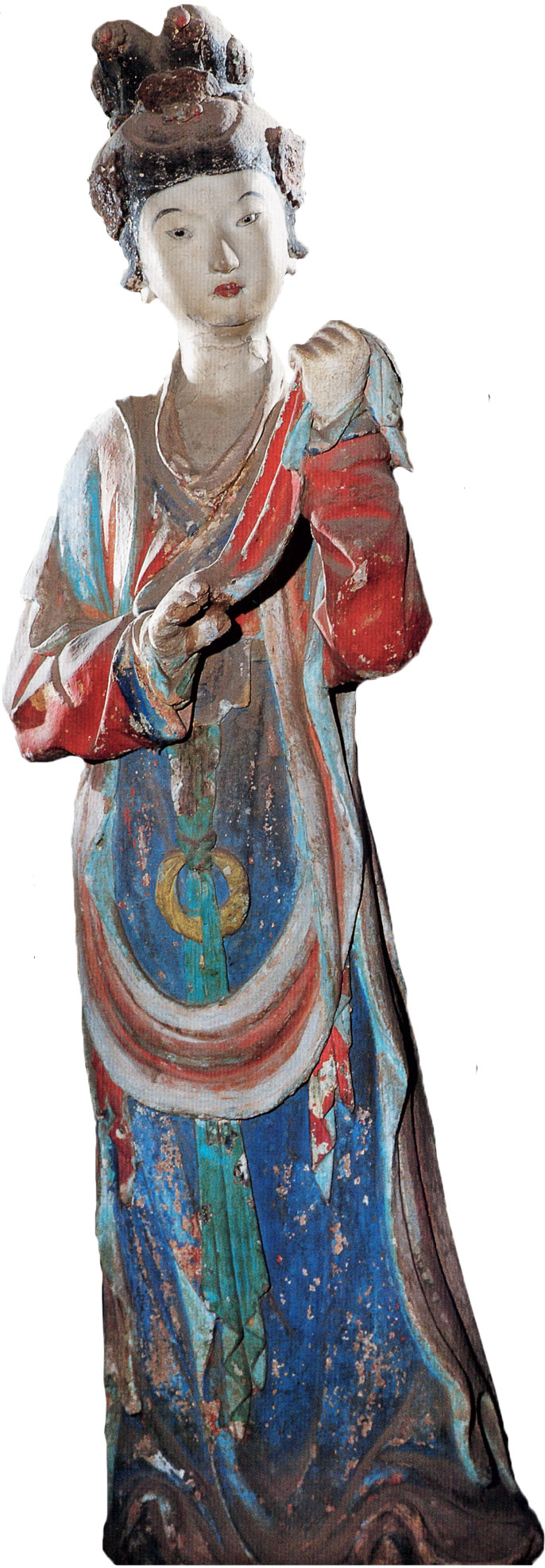Women’s Lives in Song Times

Thanks to the spread of printing, more books survive from the Song period than from earlier periods, giving us more glimpses of women’s lives. Stories, documents, and legal cases show us widows who ran inns, maids who were sent out by their mistresses to do errands, midwives who delivered babies, pious women who spent their days chanting Buddhist sutras, nuns who called on such women to explain Buddhist doctrine, girls who learned to read with their brothers, farmers’ daughters who made money by weaving mats, childless widows who accused their nephews of stealing their property, wives who were jealous of the concubines their husbands brought home, and women who used part of their own large dowries to help their husbands’ sisters marry well.
Families who could afford it usually tried to keep their wives and daughters within the walls of the house, rather than let them work in the fields or in shops or inns. At home there was plenty for them to do. Not only was there the work of tending children and preparing meals, but spinning, weaving, and sewing were considered women’s work as well and took a great deal of time. Families that raised silkworms also needed women to do much of the work of coddling the worms and getting them to spin their cocoons. Within the home women generally had considerable say and took an active interest in issues such as the selection of marriage partners for their children.
Women tended to marry between the ages of sixteen and twenty. Their husbands were, on average, a couple of years older than they were. Marriages were arranged by their parents, who would have either called on a professional matchmaker (most often an older woman) or turned to a friend or relative for suggestions. Before a wedding took place, written agreements were exchanged, listing the prospective bride’s and groom’s birth dates, parents, and grandparents; the gifts that would be exchanged; and the dowry the bride would bring. The goal was to match families of approximately equal status, but a young man who had just passed the civil service exams would be considered a good prospect even if his family had little wealth.
A few days before the wedding, the bride’s family sent her dowry to the groom’s family, which at a minimum contained boxes full of clothes and bedding. In better-
The young bride’s first priority was to try to win over her mother-
Women frequently had four, five, or six children, but likely one or more would die in infancy. If a son reached adulthood and married before the woman herself was widowed, she would be considered fortunate, for she would have always had an adult man who could take care of business for her — first her husband, then her grown son. But in the days when infectious diseases took many people in their twenties and thirties, it was not uncommon for a woman to be widowed while in her twenties, when her children were still very young.
A woman with a healthy and prosperous husband faced another challenge in middle age: her husband could bring home a concubine (and more than one if he could afford them). Moralists insisted that it was wrong for a wife to be jealous of her husband’s concubines, but contemporary documents suggest that jealousy was very common. Wives outranked concubines and could give them orders in the house, but a concubine had her own ways of getting back through her hold on the husband. The children born to a concubine were considered just as much children of the family as the wife’s children, and if the wife had had only daughters and the concubine had a son, the wife would find herself dependent on the concubine’s son in her old age.
As a woman’s children grew up, she would start thinking of suitable marriage partners. Many women liked the idea of bringing other women from their families of birth — perhaps a brother’s daughter — to be their daughters-
Neo-
It is true that foot binding began during the Song Dynasty, but it was not recommended by Neo-